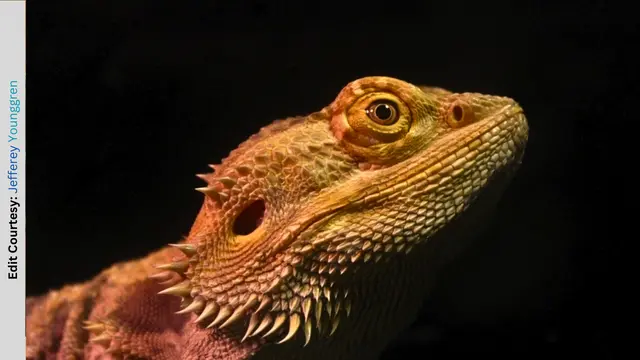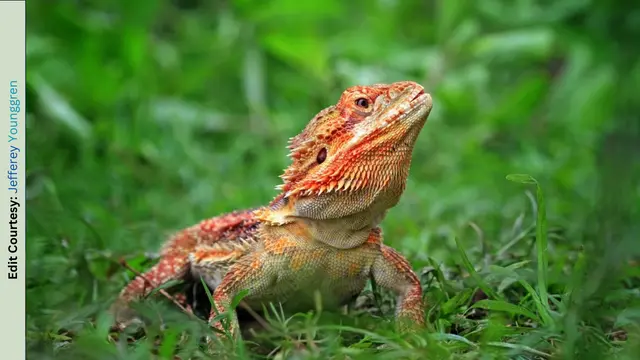Can bearded dragons lay eggs without mating?
The short answer is – Yes.
Bearded dragons can lay eggs without mating with a male. The process of laying eggs without mating is called parthenogenesis, which has been observed in more than 80 vertebrate species, about half of which are fish or lizards.
So, it’s not uncommon for bearded dragons or other types of animals such as fish, insects, and amphibians to lay infertile eggs without ever having been with a male.
The Parthenogenic Puzzle: Can Bearded Dragons Lay Eggs Without Mating?

So, how is it possible for bearded dragons to lay eggs without mating? The answer lies in a remarkable process known as parthenogenesis.
Parthenogenesis: The Birds and the Bees without the Bees
Parthenogenesis is a form of asexual reproduction in which an unfertilized egg develops into a new individual.
It occurs in various species, from plants and insects to some reptiles and fish.
In the case of bearded dragons, females can lay eggs without mating, and occasionally, these eggs can develop into viable offspring.
The Scoop on Parthenogenesis in Bearded Dragons
How often does it happen?
Parthenogenesis is relatively rare in bearded dragons.
Most of the time, females will lay infertile eggs, known as “slugs,” which won’t hatch.
However, there have been recorded instances of parthenogenic offspring, resulting from a process called automixis.
Automixis:
A Twist on Parthenogenesis Automixis is a type of parthenogenesis where the egg cell fuses with one of its polar bodies, essentially providing a “pseudo-fertilization.”
This process can lead to viable offspring, but these hatchlings will be genetic clones of their mother.
The Pros and Cons of Parthenogenesis

Pros of parthenogenesis:
- Parthenogenesis is a solo survival strategy in some species, which can be advantageous in situations where males are scarce or absent
- This process helps females to reproduce without the need for a male
- Parthenogenesis can help to maintain genetic diversity within a population
Cons of parthenogenesis:
- Lack of genetic diversity in offspring, which can make them more susceptible to disease and environmental changes
- Accumulation of harmful mutations over time, which can negatively impact the fitness of offspring
- Production of offspring that are less fit than those produced through sexual reproduction in some
FAQs about Bearded Dragons Laying Eggs Without Mating
Can bearded dragons lay eggs without mating?
Yes, female bearded dragons can lay eggs without mating, but it’s relatively rare for these eggs to develop into viable offspring.
How do bearded dragons reproduce without mating?
Bearded dragons can reproduce asexually through a process called parthenogenesis, specifically automixis.
Are parthenogenic offspring genetically identical to their mother?
Yes, parthenogenic offspring are genetic clones of their mother, as they develop from an unfertilized egg that has undergone automixis.
Is parthenogenesis common in bearded dragons?
Parthenogenesis is relatively rare in bearded dragons.
Conclusion
The world of bearded dragons is full of surprises, and the fact that they can lay eggs without mating is just one of many fascinating aspects of these incredible creatures.
Parthenogenesis, while rare, offers a glimpse into the remarkable adaptability of nature and the myriad ways life can find a way to persist.
But it’s essential to remember that this phenomenon is rare and not without its drawbacks.
As we continue to learn more about these captivating reptiles, it’s always a good idea to appreciate their complex biology and the many wonders they have to share with us.
